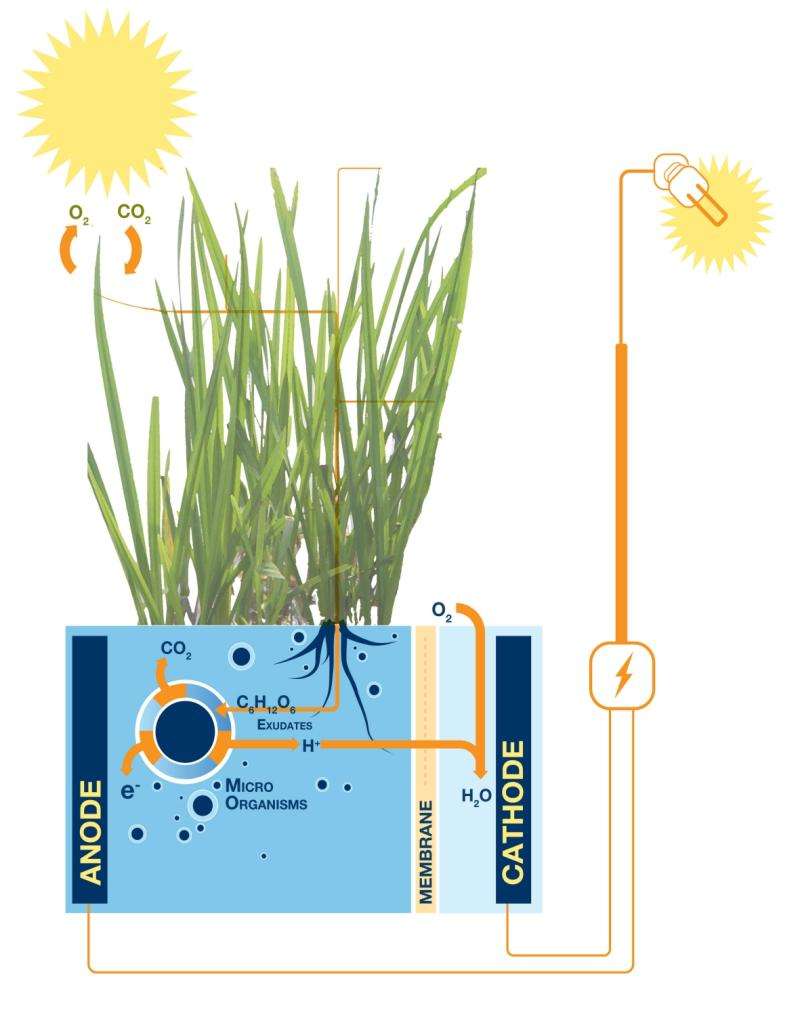
Live plants could be used for bioelectricity production! A prototype microbial cell has just been made, fed with glucose from the photosynthesis of a plant. The marshes or the rice fields of the globe could in this way become power plants, as well as our roofs!
Marjolein Helder from the University of Wageningen (The Netherlands) and David Strik may have found an original source of energy. These researchers used photosynthesis by higher plants to feed electrons producing bacteria . The project is certainly still experimental, but tests have proved conclusive. In a few years time, they estimate, houses could be fed by plants grown on the roofs!
Plants use the photosynthesis to produce sugars from water, gas carbon (CO 2 ) and light. However, 40 to 70% of these sugars are not used by these organisms. They are therefore rejected in the environment by the roots, to the delight of soil bacteria. These degrade these compounds to provide energy. It is on this stage that the researchers decided to act.

A microbial cell powered by plants
Plants were cultured in a medium containing microorganisms. By degrading the exudate (the sugars released), these bacteria produce CO 2, the proton (H + ) and electrons recoverable by an anode positioned proximate the roots. The cathode is itself fixed inside a second compartment separated from the first by a membrane permeable to protons. The potential difference between the two media generates an electric current. In the end, the protons arriving in the second compartment by diffusion will react with molecules oxygen (O 2 ) and electrons from the cathode to form water (H 2 O).
During testing, production reached 0.4 watt per square meter (W / m²) than in growing plants, more than the current generated by various other microbial cells exploiting the fermentation of biomass. In the future, the system’s productivity could reach 3.2 W / m². A flat roof of 100 m² would then provide enough electricity for the year to power a home (an average of 2,500 kWh / year in France). Since 2009, the project has been developed by Plant-e, a spin-off created by the two researchers.
No conflict for farmland exploitation
The microbial plant cell (or Plant-MFC Plant Microbial Fuel Cell ) could soon be installed on flat roofs or in some developing countries. Indeed, the device can be buried in wetlands exploited by agriculture without hindering its use, for example in rice fields , or in swampy environment. Interestingly, the stack would work with a wide variety of plants. In the end, it is therefore non-polluting, discreet and durable.
However, some details still need to be improved before scaling up this process. Researchers complain in particular of the large amount of materials they still have to use to build the electrodes. Solutions would already be considered. In any case, this means of electricity production has enough to meet a certain success.